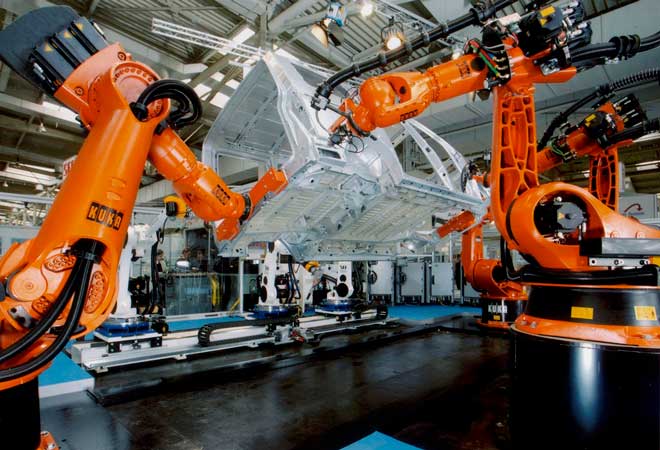Companies need to prioritize safety when designing autonomous mobile robots. The American National Standards Institute (ANSI) and the Robotics Industry Association (RIA) have developed the ANSI/RIA R15.08 Safety Standard for Mobile Robots. Mobile robots have become a powerful automation tool in manufacturing, warehouse, and distribution facilities, and their numbers are growing. In most cases, companies are unclear on how to use mobile robots in facilities most effectively.
It's essential to ensure safety.
By 2025, AMRs that can move dynamically through a facility will occupy most of the global mobile robot fleet. Consequently, it is essential to properly train and sensitize workers to their new robot counterparts to ensure everyone is safe while working closely together.
Automated Guiding Vehicles (AGVs)
Working safely with Automated Guided Vehicles (AGVs) seems uncomplicated, as their movement is limited to lanes marked with magnetic tape. While it is easy to train employees to avoid fixed AGV routes, it may not be feasible or possible for them to do so.
AGVs cannot evade obstacles, unlike AMRs. If there are obstacles in the form of workers in the way of an autonomous guided vehicle, the system has to slow down or stop altogether and wait until the workers are out of the way. It, unfortunately, reduces the performance and efficiency of AGV solutions.
Because AGVs lack autonomous navigation and obstacle avoidance capabilities, most companies choose to replace AGVs with AMRs.
When choosing robots, it's essential that they can work correctly in your facility. Check if they have cameras, sensors, and safety features to recognize and move around protruding objects, forklifts, people, and other obstacles typical of your facility. In particular, make sure the AMR system meets the ANSI/RIA R15.08 safety standard.
A facility administrator or operations manager implementing AMR for personnel operations or to support building sanitation should consider three things from a security perspective:
1. Make sure your facility meets the requirements for mobile robots. Many risk factors can make AMRs unsuitable for specific tasks. For example, they may not be able to see certain features of the environment, such as ramps or the sides of loading docks.
2. Choose mobile robots that can avoid common obstacles in your facility, even when moving in reverse. Don't shift the responsibility for collision avoidance to humans. Employees should be free to move around the facility without bumping into the robot. Check with your AMR system manufacturer to see if the robot has "blind spots" when driving, an overview of the distance between the robot and the floor, and a dynamic obstacle avoidance feature that allows the robot to bypass moving objects and avoid driving into the oncoming lane. That's why laser sensors, 3D cameras, and advanced software are essential.
3. explain to employees how to properly cooperate with (and trust) robots. - AMRs may be a new practice for many workers, even though, at one time, they may have worked with AGVs or robotic arms. AMRs are the first robotics intelligent enough to work independently and in a freely accessible environment. Of course, they rely on humanitarian assistance in their activities - robots need to be told where to go to receive or deliver goods or at what intervals to sanitize the room. However, their movement is not controlled by humans but only by their task lists. Employees need to feel comfortable being in the same room as these robots.
It may take some time to create an atmosphere of trust. But the longer humans and robots cooperate, the more they will appreciate their new colleagues.




